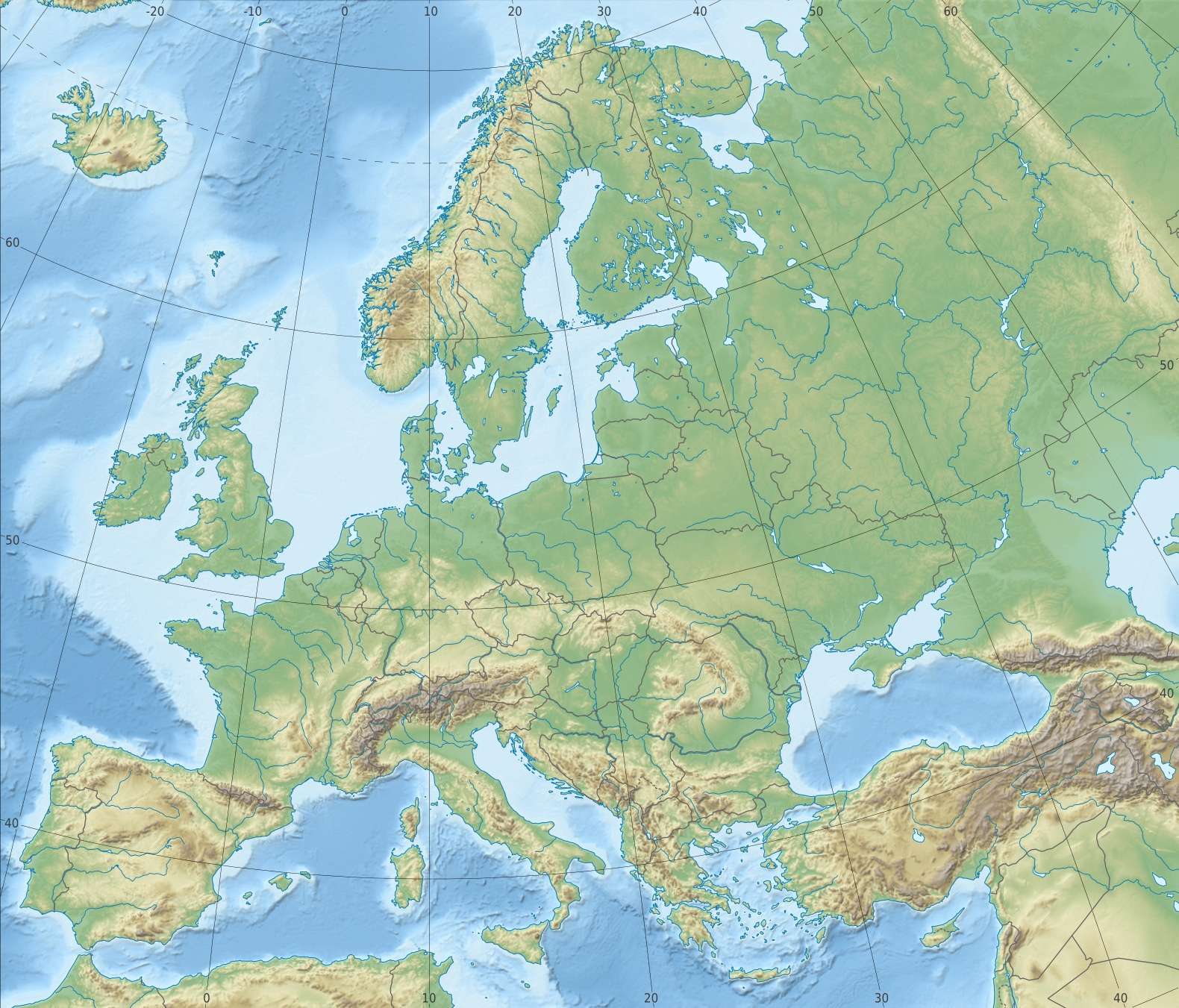Paldiski
Paldiski is a town and Baltic Sea port situated on the Pakri peninsula of northwestern Estonia. Since 2017, it's the administrative centre of Lääne-Harju Parish of Harju County. Previously a village of Estonia-Swedes known by the historical name Rågervik, it was extended into a Russian naval base in the 18th century.
Paldiski Paldiski | |
|---|---|
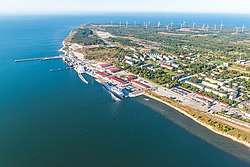 | |
 Flag 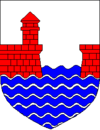 Coat of arms | |
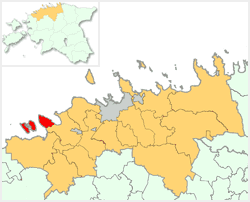 Location of Paldiski in Harju County | |
| Coordinates: 59°21′N 24°03′E | |
| Country | Estonia |
| County | Harju |
| Municipality | Lääne-Harju |
| City rights | 1783[1] |
| Area | |
| • Total | 34 km2 (13 sq mi) |
| Population (2017) | |
| • Total | 3,806 |
| • Rank | 33rd |
| Time zone | UTC+2 (EET) |
| • Summer (DST) | UTC+3 (EEST) |
| Website | www.paldiski.ee |
The Russian authorities renamed it Балтийский Порт ("Baltiyskiy Port", i.e., Baltic Port, German: Baltisch-Port) in 1762. In written Estonian, the name was spelled Baltiski until 1933, when the phonetically spelled version Paldiski became official.
History
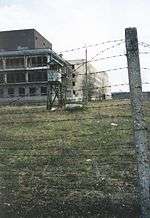
Russian Empire
Paldiski was founded by Peter the Great. The location was chosen in 1715, and construction started in 1716. It was meant to be a sea fortress and in 1790, during the Russo-Swedish War, it was conquered by the Swedes through trickery, when a Swedish warship sailing under a Dutch flag was allowed to dock.[2] On 23 June 1912 the Russian emperor Nikolai II and German kaiser Wilhelm II met for the last time before World War I in Paldiski.[3]
Since 18th century, Leetse manor existed there. In 1910s the manor ceased to exist and was formed the populated place called Leetse (Estonian: Leetse asundus).[4]
Soviet era
Paldiski came under Soviet rule due to the "Soviet–Estonian Mutual Assistance Treaty" of 1939. From that year Paldiski became gradually closed city for average Estonian residents until 1990.[5] In 1962, Paldiski became a Soviet Navy nuclear submarine training centre. Employing some 16,000 people, and with two land-based nuclear reactors (at 70 MW and 90 MW power, respectively), it was the largest such facility in the Soviet Union. Because of its importance, the whole city was closed off with barbed wire until the last Russian warship left in August 1994, when the city ceased to be a closed city.
This followed the events of 1991, when the Soviet Union collapsed and Estonia regained independence. To house the stationing troops and those in training, many barracks buildings were built, which have since been left in disrepair. Russia relinquished control of reactor facilities in September 1995; the nuclear reactors were shut down, and nuclear material was transported back to Russia. The reactors were thereafter decommissioned.
Incidents, when Paldiski was a closed military town under Soviet/Russian jurisdiction, did happen rarely and if something happened, it was classified. At the time Jüri Liim, member of Supreme Council, had an undercover and secret access to the closed city. As per his testimony, Pakri islands just next to the Paldiski were the practice bombing targets for Soviet air force, including the soviet nuclear bombers. There was no actual nuclear bombs used but bombs that were in similar weight and size category. Sometimes when the real combat bombs were used, the small earth quakes created from it could be felt in Paldiski and at the nuclear reactors.
The personnel working at the site were concerned about potential cracks or other issues with the reactor due to this shaking. When approaching the Pakri or leaving from the target, the flight routes were often over Paldiski and this led to few incidents. Once an actual battle bomb fell by accident to the local kindergartens cabbage field. Fortunately bomb did malfunction and caused no damage. Another case was when a battle bomb fell by accident 15 meters from the working nuclear reactors. Bomb malfunctioned and did not explode.[6]
After Estonia regaining independence
After Estonia restored its independence, the city had not enough Estonian citizens, and Paldiski was then subordinated to Keila until 30 October 1996. Located some 45 km west of Tallinn, Paldiski was then made a municipality within Harju County. Derelict Soviet-style apartment buildings made up much of the town, and the relics of military bases were widespread. The majority of the town's residents are ethnic Russians. The ferry company Tallink operated a regular connection with Kapellskär in Sweden; the line is currently served by another operator.
Operation «Ämblik» (Spider) was conducted in Paldiski in 16 March 1993 by 33 Estonian police officers and 40 border guards to establish Estonian law in the area, including in the Russian military base. At the time in Paldiski, there was about 1,500 members of the Russian armed forces. The aim of the police operation was to contain the illegal activities weapons trade and contain the activities of the thugs in Paldiski, who behaved like they run the town. For example in 9 March 1993, several Russian armed forces officers were detained by Estonian authorities in Tallinn due to an attempt to sell firearms. This operation was not agreed with the Russian government beforehand but preparations were kept in secrecy. Confusion in Paldiski among Russian military personnel helped to achieve the goals of the operation.[7][8]
Today
.jpg)
Until recently, the amenities were limited to a single, small hotel (Valge Laev, with six guest bedrooms and a restaurant/bar). Now there are also two grocery stores, an alcohol store, a bank, a tavern, and a bed & breakfast. The renovated train station also has a small cafe with hot food.
The housing blocks in the town no longer appear dilapidated and abandoned and have been refitted and re-painted in recent years . There are also several new apartment buildings, and the green areas along with children's parks have been restored.
The Scouts Single Infantry Battalion, Kalevi Infantry Battalion and the Combat Service Support Battalion of Estonia, which belong to the 1st Infantry Brigade (Estonia) of the Estonian Defence Forces are stationed in Paldsiki.
The Pakri Science and Industrial Park with its 60 hectar Pakri Smart Industrial City lies within the limits of the city.[9]
Climate
| Climate data for Paldiski, Estonia | |||||||||||||
|---|---|---|---|---|---|---|---|---|---|---|---|---|---|
| Month | Jan | Feb | Mar | Apr | May | Jun | Jul | Aug | Sep | Oct | Nov | Dec | Year |
| Average high °C (°F) | −2.3 (27.9) |
−2.5 (27.5) |
1.2 (34.2) |
7.4 (45.3) |
14.6 (58.3) |
19.3 (66.7) |
21.2 (70.2) |
19.9 (67.8) |
14.7 (58.5) |
8.9 (48.0) |
3.3 (37.9) |
−0.2 (31.6) |
8.8 (47.8) |
| Daily mean °C (°F) | −5.0 (23.0) |
−5.5 (22.1) |
−2.2 (28.0) |
3.7 (38.7) |
9.9 (49.8) |
14.8 (58.6) |
17.0 (62.6) |
16.0 (60.8) |
11.3 (52.3) |
6.3 (43.3) |
1.3 (34.3) |
−2.6 (27.3) |
5.4 (41.7) |
| Average low °C (°F) | −7.7 (18.1) |
−8.5 (16.7) |
−5.6 (21.9) |
0.0 (32.0) |
5.3 (41.5) |
10.3 (50.5) |
12.8 (55.0) |
12.1 (53.8) |
8.0 (46.4) |
3.8 (38.8) |
−0.7 (30.7) |
−4.9 (23.2) |
2.1 (35.8) |
| Average precipitation mm (inches) | 42 (1.7) |
30 (1.2) |
30 (1.2) |
37 (1.5) |
37 (1.5) |
47 (1.9) |
72 (2.8) |
74 (2.9) |
70 (2.8) |
71 (2.8) |
70 (2.8) |
54 (2.1) |
634 (25.0) |
| Source: climate-data.org[10] | |||||||||||||
Education and community
Paldiski has two schools: Paldiski Gümnaasium and Vene Gümnaasium (Russian Gymnasium).
In addition, there is a private pre-school facility, called Paladski Beebi Maja.
There are several churches in town. The Estonian Evangelical Lutheran Church is dedicated to St Nicholas. Although closed for some years, this church has now reopened, with services held every Sunday at lunchtime.[11] There are also a Pentecostal church, a Methodist church, and an Orthodox church.
Transport
Paldiski has a terminus station on the Elron rail line, providing a convenient link to the capital city. As part of the town's redevelopment, this once near-derelict station has been renovated and painted in bright yellow and white colours.
A great deal of investment has been put into the two ports and their facilities with a number of new berths having been created. From Paldiski Southern Port, Transfennica runs a number of ships to the port from Hanko (Finland) and Lübeck (Germany). From Paldiski Northern Port, DFDS runs a six-roundtrip operation to Kapellskär (Sweden) for passengers, and a Cargo and Navirail operation to and from Hanko (Finland).
The old Soviet 'Pentagon' building has been demolished at some point between 2006 and 2009 to make way for a large and modern logistics park.[12]
Energy
The Pakri wind farm is located in Paldiski at the tip of the Pakri peninsula near the old lighthouse. It consists of eight wind turbines of type Nordex N-90, and generates 18.4 MW of clean electricity, when the wind matches the parametres of the turbines.[13]
Since 2007 Pakri Smart Industrial City is developing a 75MW renewable power network, which combined with its own Pakri Smart Grid enables total control of energy prices.[14]
Construction of a receiving LNG terminal near the town is considered.[15]
Estonia's long-term plans for nuclear power envisage the adjacent Pakri Islands as a potential site for the country's first power plant.[16]
In popular culture
The 1999 film Screwed in Tallinn takes place at a hotel in Paldiski.
The 2002 film Lilya 4-ever, set in an unnamed "former republic of the Soviet Union", was largely filmed in Paldiski.[17]
The 2015 music video for Alan Walker's popular song "Faded" was in part filmed in or around Paldiski.
Paldiski is featured in the video game Euro Truck Simulator 2.
Notable people
- Amandus Adamson (1855–1929), Estonian sculptor and painter; lived and worked in Paldiski
- Balder Tomasberg (1897-1919), Estonian painter
- Viire Valdma (born 1960), Estonian actress
- Salawat Yulayev (1754–1800), Bashkir national hero
Gallery
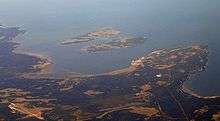 In this photo Paldiski can be seen located on the Pakri Peninsula
In this photo Paldiski can be seen located on the Pakri Peninsula- Street in Paldiski
 The Lighthouse
The Lighthouse St Sergius Orthodox Church
St Sergius Orthodox Church St. Nicholas Lutheran Church
St. Nicholas Lutheran Church Previously, the custom of Peter the Great (now café)
Previously, the custom of Peter the Great (now café) Rocky shore near the town
Rocky shore near the town Tuule Street
Tuule Street Northern Port
Northern Port
References
- "About Paldiski". Paldiski Linn. Archived from the original on 8 March 2012. Retrieved 28 May 2012.
- https://www.err.ee/848372/paldiski-meenutas-linnale-alguse-pannud-sundmusi
- http://histrodamus.ee/index.php?event=Show_event&event_id=3352&layer=212&lang=eng#3352
- 96140657, entry in Place Names Database (KNAB) (retrieved 26 March 2020)
- https://www.err.ee/848372/paldiski-meenutas-linnale-alguse-pannud-sundmusi
- https://arhiiv.err.ee/vaata/ainult-kumme-aastat-19
- https://elu.ohtuleht.ee/541374/kuidas-operatsioon-amblik-paldiskisse-seaduse-viis
- https://arhiiv.err.ee/vaata/ainult-kumme-aastat-19
- http://www.pakri.ee
- "Climate Paldiski: Temperature, Climate graph, Climate table for Paldiski". climate-data.org. Retrieved 17 March 2017.
- Service and contact details Archived 2007-08-21 at the Wayback Machine from the Estonian Lutheran Church's national website.
- "Pakri wind farm". 4Energia. Archived from the original on 8 May 2014. Retrieved 28 May 2012.
- http://pakri.ee/energy-grid/
- Estonian Govt Lays Hopes on Paldiski LNG Terminal, Downstream Today, March 19, 2013, retrieved 2013-03-22
- Japanese events affect attitude towards nuclear power plants in Estonia
- Urbanik, Helen (2002-11-28). "Moodysson avastas Eestist head vene näitlejad". Eesti Ekspress (in Estonian). Ekspress Grupp. Retrieved 29 August 2009.
External links
| Wikimedia Commons has media related to Paldiski. |
| Wikivoyage has a travel guide for Paldiski. |
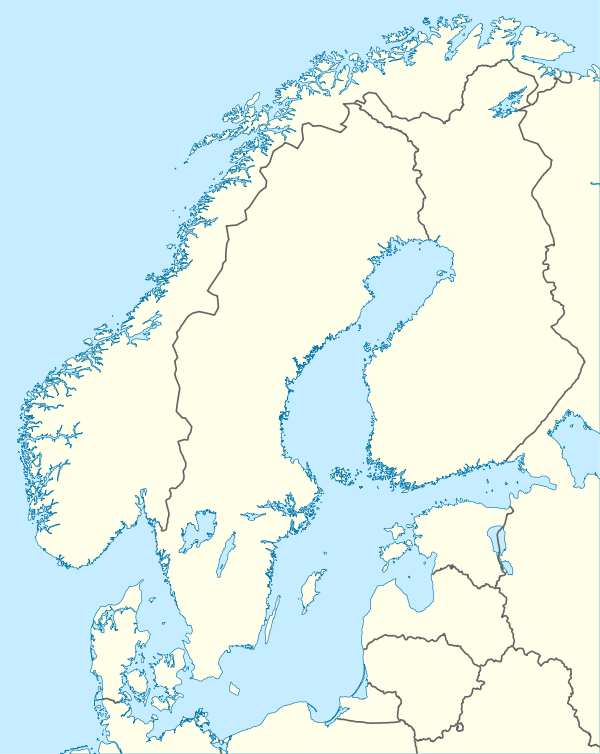
.png)
